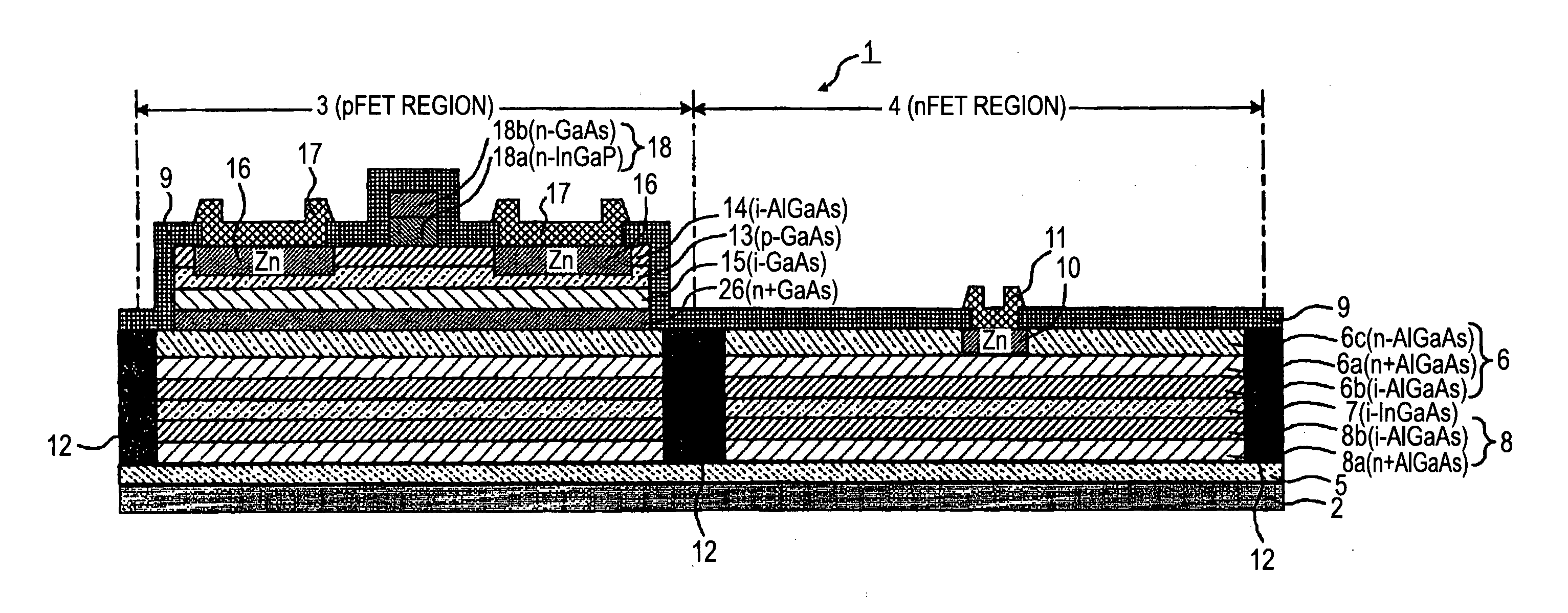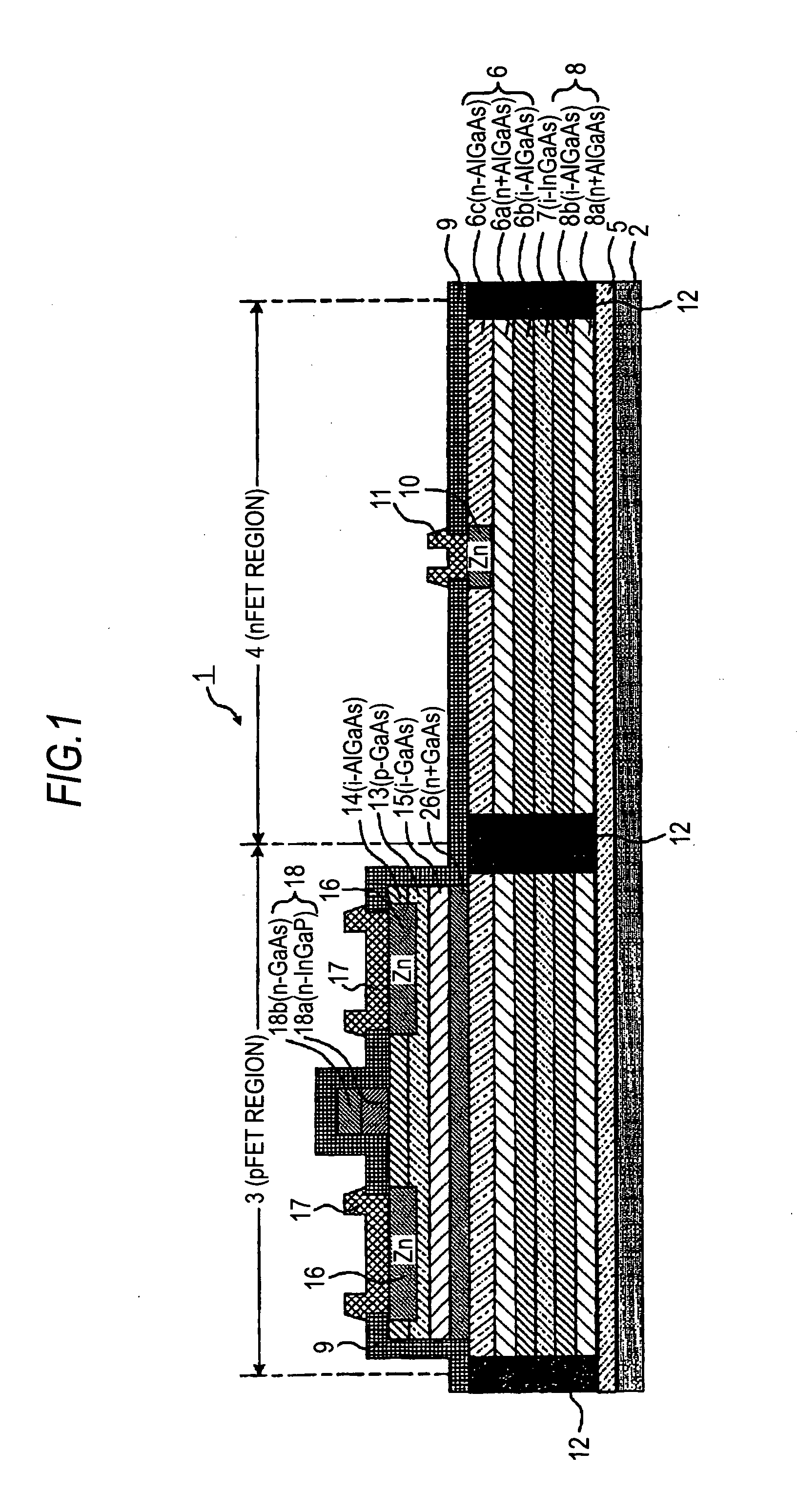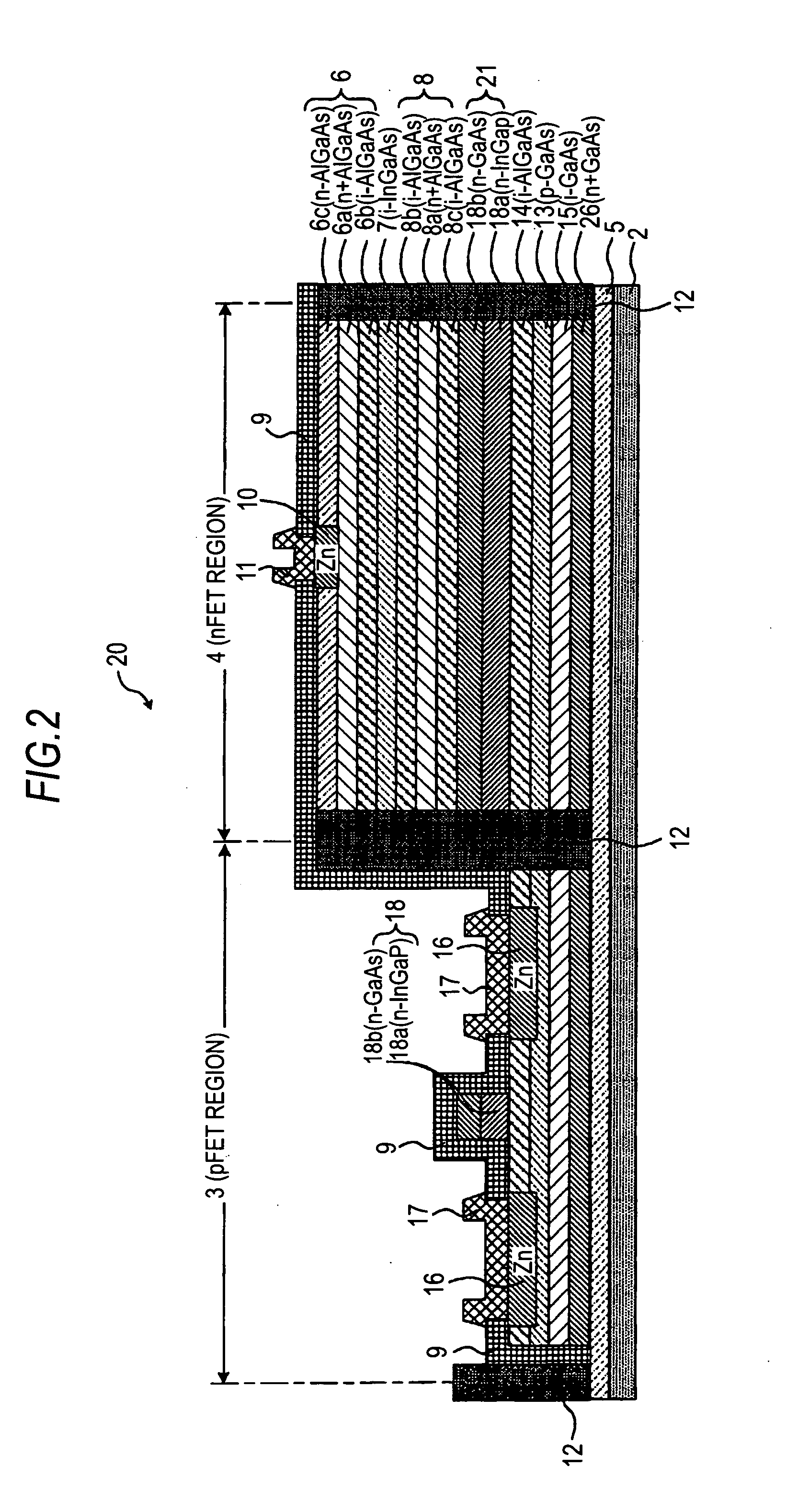Semiconductor device and method for manufacturing same
a semiconductor and semiconductor technology, applied in the direction of semiconductor devices, electrical devices, transistors, etc., can solve the problems of difficult control of threshold voltage, difficult operation of p-channels, and difficulty in achieving heterojunction as intended, so as to achieve enhanced mode and increase the effect of turn-on voltag
- Summary
- Abstract
- Description
- Claims
- Application Information
AI Technical Summary
Benefits of technology
Problems solved by technology
Method used
Image
Examples
first embodiment
[0048]FIG. 1 is a schematic longitudinal sectional view of a semiconductor device according to First Embodiment of the present invention. The following detailed description will be given through the case where group III-V compounds are used for the compound semiconductor. First, an nFET region 4 is described. A GaAs monocrystalline substrate is used as a compound semiconductor substrate 2. A first buffer layer 5 is a non-doped i-GaAs layer with no impurities. An n-type second barrier layer 8 has a bilayer structure including an n-type charge supply layer 8a and a high-resistance layer 8b. The n-type charge supply layer 8a is an n+AlGaAs layer doped with the n-type impurity Si a high concentration of 1.0×1012 to 4.0×1012 atoms / cm2, and that has a thickness of about 3 nm. The high-resistance layer 8b is an i-AlGaAs layer with no impurities and having a thickness of about 3 nm. The first channel layer 7 is an i-InGaAs layer with no impurities and having a thickness of 5 nm to 15 nm. Th...
second embodiment
[0056]FIG. 2 is a schematic longitudinal sectional view of a semiconductor device 20 according to Second Embodiment of the present invention. Like numerals represent like members or members with similar functions.
[0057]The semiconductor device 20 includes a pFET region 3 and an nFET region 4 formed on a compound semiconductor substrate 2. The pFET region 3 is described first. A first buffer layer 5 of GaAs with no impurities is formed on the compound semiconductor substrate 2 of GaAs monocrystals. A cap layer 26 of n+GaAs doped with n-type impurities, and a second buffer layer 15 of i-GaAs with no impurities are formed on the first buffer layer 5. A second channel layer 13 of p−GaAs doped with p-type impurities is formed thereon.
[0058]A gate-leak prevention layer 14 of i-AlGaAs with no impurities is formed on the second channel layer 13. On the gate-leak prevention layer 14 is formed an n-type gate region 18 of a bilayer structure that includes an n-type first gate layer 18a of n−In...
third embodiment
[0064]A manufacturing method of a semiconductor device 1 according to Third Embodiment of the present invention is described below with reference to FIG. 3 to FIG. 11. Like numerals represent like members or members with similar functions.
[0065]FIG. 3 is a schematic longitudinal sectional view representing a laminate structure formed by the epitaxial growth of layers of primarily GaAs material on a GaAs monocrystalline substrate using, for example, a MOCVD (Metal. Organic Chemical Vapor Deposition) method. A GaAs layer with no impurities is epitaxially grown on a compound semiconductor substrate 2 of GaAs monocrystals to form a first buffer layer 5 of about 200 nm thick. Then, an n+AlGaAs layer doped with the n-type impurity Si at a high concentration of 1.0×1012 to 4.0×1012 atoms / cm2, for example, 3.0×1012 atoms / cm2 is epitaxially grown on the first buffer layer 5 to form an n-type charge supply layer 8a of about 3 nm thick. This is followed by the epitaxial growth of a i-AlGaAs la...
PUM
 Login to View More
Login to View More Abstract
Description
Claims
Application Information
 Login to View More
Login to View More - R&D
- Intellectual Property
- Life Sciences
- Materials
- Tech Scout
- Unparalleled Data Quality
- Higher Quality Content
- 60% Fewer Hallucinations
Browse by: Latest US Patents, China's latest patents, Technical Efficacy Thesaurus, Application Domain, Technology Topic, Popular Technical Reports.
© 2025 PatSnap. All rights reserved.Legal|Privacy policy|Modern Slavery Act Transparency Statement|Sitemap|About US| Contact US: help@patsnap.com



